Contents
Guatemala has a very rich cultural heritage, from the prehistoric Mayan civilizations that previously flourished there to the colonial legacies left by Spanish invaders. Not surprisingly, the nation’s path has left an imprint on its flag, reflecting the tenacity and pride of its people from the pre-Columbian age through its war for independence and subsequent hardships.
In this article, we set out on a quest to uncover the meaning behind the Guatemala flag, a proud symbol that captures the spirit of a tenacious people.
Guatemala: Country Profile
Guatemala is a fascinating country located in the center of Central America. The country enjoys a strategic location between Mexico to the north and Belize, Honduras, El Salvador, and the Pacific Ocean to the east. The culture of the nation is proudly symbolized by its unique Guatemala flag.
Geography
Guatemala is a country with a great diversity of geography. The nation provides stunning views at every turn, from its broad coastal plains along the Pacific Ocean to the towering Sierra Madre mountain ranges, including the spectacular volcanic peaks. Beautiful lakes, flowing waterfalls, and lush jungles all contribute to Guatemala’s natural beauty.
Central Standard Time (CST), which is 6 hours behind Coordinated Universal Time (UTC-6), is marked as year-round time in Guatemala.
Guatemala has a thriving natural environment with a variety of habitats and a rich biodiversity. Tropical rainforests, cloud forests, mangrove forests, and sizable national parks may all be found in the nation. Famous locations like Tikal, an ancient Mayan city tucked away in the lush Petén rainforest, serve as a showcase for the nation’s historical and natural wonders.
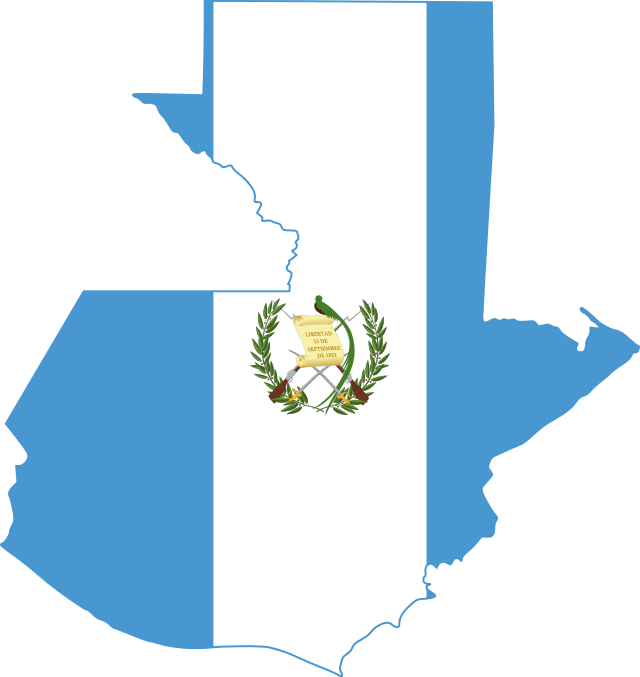
Population
Guatemala’s population is similarly diversified, made up of a patchwork of ethnic groups. With their rich customs and cultural legacy, the indigenous Maya groups make up a sizable portion of the population. There are also Ladinos, and Mestizos. The rich fabric of Guatemala’s identity is woven together in part by this cultural variety.
Guatemala Culture
Guatemala is a nation rich in culture. The nation celebrates an intriguing fusion of native Mayan traditions, colonial Spanish influences, and modern global influences. In addition to Spanish, which is the official language, traditional Mayan languages including K’iche’, Kaqchikel, and Mam are still used. Guatemala’s lively festivals, colorful fabrics, exquisite handicrafts, traditional music, and mouthwatering food, which feature a blend of indigenous ingredients and Spanish flavors, all represent the country’s rich cultural past.
Guatemaltecos, sometimes referred to as Guatemalans, are well-recognized for their friendliness, generosity, and a deep sense of belonging. Guatemalan society is centered on the family, with tight bonds and a communal outlook on life. Due to the country’s history of great adversity, the Guatemalan mentality is characterized by tenacity.
Population
Guatemala is one of the most populated nations in Central America, with a population of over 17 million. The nation’s economic, political, and cultural centers are located in Guatemala City, the capital city. Many rural communities, however, continue to be closely connected to traditional agricultural methods and a slower-paced way of life.
Design & Symbolism of Guatemala Flag
The beautiful Guatemala flag perfectly encapsulates the character of this great Central American country. The flag, which was meticulously designed, features a potent combination of hues, designs, and symbols that speak to the history, culture, and ambitions of the Guatemalan people.
Three equal-width vertical stripes make up the flag. The left side of the flag has a blue stripe, while the two stripes next to it are white. The color blue represents the virtues of justice, loyalty, and tenacity and reflects Guatemala’s dedication to sustaining these ideals on its path to growth. The nation’s goals for peace and harmony are embodied by the white stripes on either side, which stand for purity, integrity, and peace.
The Guatemalan coat of arms takes its place at the very center of the flag. It has a shield with numerous iconic decorations. Two crossed rifles surround the shield, signifying the country’s readiness to protect its independence and freedom. A gorgeous bird called a quetzal flies above the shield, standing for liberty and independence. The quetzal is a beloved national emblem and has special cultural importance for Guatemala’s indigenous people.
Two crossed swords are depicted inside the shield, signifying the Guatemalan people’s commitment to defend their principles and beliefs. An olive branch and a palm branch are intertwined at the base of the shield, denoting peace and triumph, respectively.
A scroll that is positioned above the shield has the national motto, “LIBERTAD 15 DE SEPTIEMBRE DE 1821” (Liberty September 15, 1821), which celebrates Guatemala’s independence from Spanish rule.
The Guatemala flag’s proportions are 5:8, with a width-to-length ratio that guarantees its distinctive visual impact when flown proudly. The flag of Guatemala captures the nation’s history, ideals, and aspirations thanks to its carefully selected colors, exact proportions, and elaborate coat of arms.
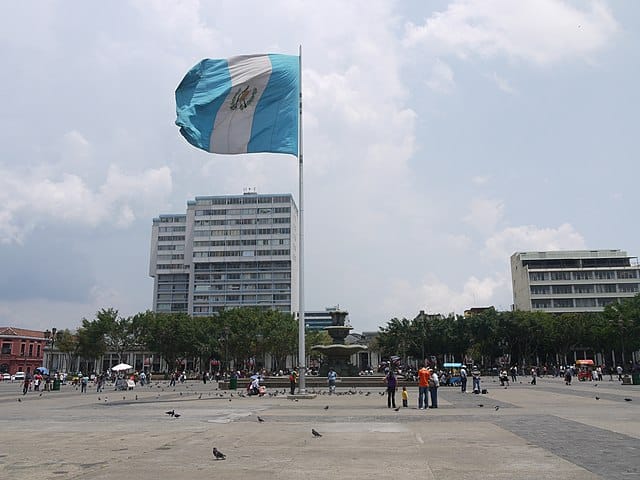
History of Guatemala Flag
Early Adoption & Invention
On August 17, 1871, the “La Azul y Blanco” (Blue and White) flag of Guatemala was formally approved. President Miguel Garcia Granados and attorney Juan José de la Riva, among other powerful people at the time, collaborated to create its design. The old flag, which was flown while Guatemala was federated with other nations in Central America, was replaced with this one.
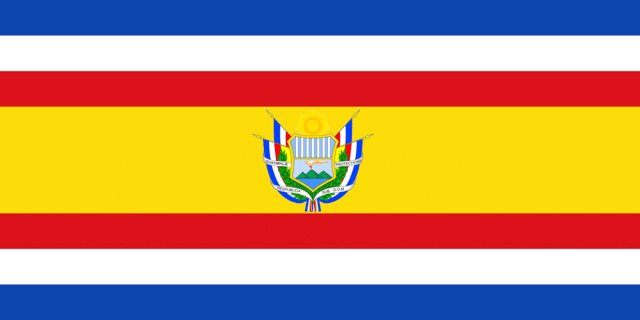
Independence & Evolution
The Guatemala flag has been present at key historical turning points in the development of the country. On September 15, 1821, Guatemala became independent from Spanish authority, and it proudly flew. The flag changed throughout time to reflect shifting political conditions. Throughout times of political instability and cultural change, it continued to be a representation of resiliency and individuality.
The Civil War’s Effect
During the Guatemalan Civil War (1960–1996), the flag rose to prominence as a potent symbol of resistance and optimism. It acted as a motivating sign for people battling for social justice and human rights. The flag came to symbolize the fight against oppression and serve as a symbol of solidarity through difficult times.
Guatemala Flag Today
The flag still serves as an insignia of the country’s identity and ambitions today. During international gatherings, public events, and national holidays, it is prominently displayed. The flag acts as a uniting symbol, promoting among Guatemalans both at home and abroad a sense of shared history, cultural heritage, and national pride.
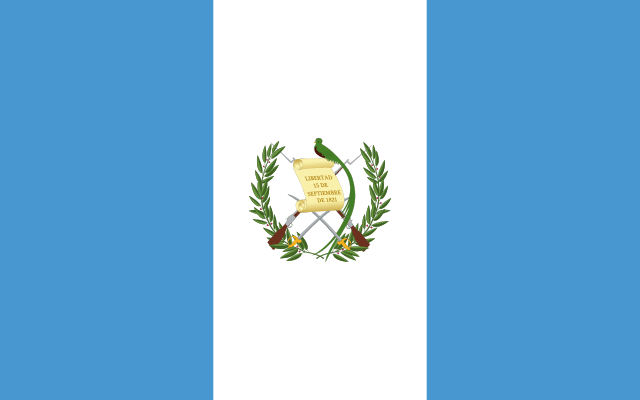
Guatemala Flag Protocol
Displaying the Flag
On special occasions, such as national holidays, Independence Day, and significant state events, the Guatemala flag should be flown from government buildings, public buildings, and dwellings. It is traditional to fly the flag from dawn to sunset, making sure it is well-lit and not done in bad weather.
Half-masting
During serious events like the passing of a well-known national figure or in times of national sorrow, the flag may be flown at half-staff as a gesture of grief. The flag should be hoisted to the top of the pole and then lowered to half while at half-mast.
Position and Sequence
The Guatemala flag should be placed prominently when exhibited with other flags. It is typically flown in the middle or a little bit higher than other flags. The Guatemala flag should be at the top of any flags flying on the same pole. When exhibited with other flags, the national flag should also be bigger.
Respect and Care
The Guatemala flag should always be treated with respect and care. It must not come into contact with the ground or be put to any harmful use. It should be neatly folded and kept in a dry location when not in use.
Guatemala Coat Of Arms
Since the Guatemala Coat of Arms is located in the middle of the flag and is part of it, we believe it’s crucial to provide a brief overview of this significant element.
The Guatemalan coat of arms has an important place in the history and identity of the country. The symbol, which represents the ideals and ambitions of the Guatemalan people, underwent several changes before taking on its present appearance.
In 1825, during the first Guatemalan republic, the first coat of arms was shown. It represented the protection of liberty and sovereignty with two crossed guns and a Phrygian hat.
The contemporary coat of arms is centered on a shield split into four sections and was adopted on November 18, 1871. Golden volcanoes on a light blue backdrop may be seen at the top left and bottom right quarters, emphasizing the beauty and geographic significance of those regions.
The renowned quetzal bird, a respected figure in Mayan mythology and a national emblem of liberty flies over the shield. The quetzal represents Guatemala’s natural beauty and spirit of independence with its colorful feathers and imposing presence.
Under the shield, the crossed rifles stand for the nation’s will to preserve the rules of justice and protect its sovereignty. The laurel wreath that surrounds the shield stands for distinction and honor.
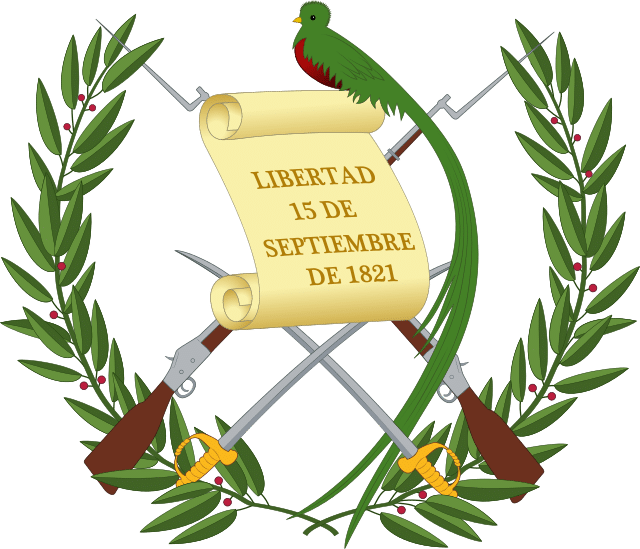
Bottom Line
In the article above, we gave a detailed overview of the Guatemala flag – an unwavering embodiment of unity, culture, and national pride. The flag captures the essence of the Guatemalan people thanks to its vivid colors, symbolic components, and rich historical relevance. This flag acts as a continual reminder of resiliency and cultural identity thanks to its origins in ancient civilizations and the trials and victories of a nation.